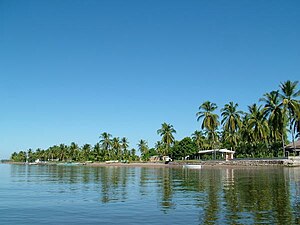
Mazatlán is a city in the Mexican state of Sinaloa. The city serves as the municipal seat for the surrounding municipio, known as the Mazatlán Municipality. It is located on the Pacific coast across from the southernmost tip of the Baja California Peninsula.

William Augustin Webb was an American sailor and Mexican–American War veteran who resigned his United States Navy commission after more than 20 years of service to join the Confederate States Navy in the American Civil War. Webb was decorated for his service as Captain of the CSS Teaser, part of the James River Squadron, during the Battle of Hampton Roads (1862).

The Pacific Squadron was part of the United States Navy squadron stationed in the Pacific Ocean in the 19th and early 20th centuries. Initially with no United States ports in the Pacific, they operated out of storeships which provided naval supplies and purchased food and obtained water from local ports of call in the Hawaiian Islands and towns on the Pacific Coast. Throughout the history of the Pacific Squadron, American ships fought against several enemies. Over one-half of the United States Navy would be sent to join the Pacific Squadron during the Mexican–American War. During the American Civil War, the squadron was reduced in size when its vessels were reassigned to Atlantic duty. When the Civil War was over, the squadron was reinforced again until being disbanded just after the turn of the 20th century.
The first USS Mohican was a steam sloop-of-war in the United States Navy during the American Civil War. She was named for the Mohican tribe and was the first ship of her class.

Harriet Lane was a revenue cutter of the United States Revenue Cutter Service and, on the outbreak of the American Civil War, a ship of the United States Navy and later Confederate States Navy. The craft was named after the niece of senator and later United States President, James Buchanan; during his presidency, she acted as First Lady. The cutter was christened and entered the water for the Revenue Service in 1859 out of New York City, and saw action during the Civil War at Fort Sumter, New Orleans, Galveston, Texas, and Virginia Point. The Confederates captured her in 1863, whereupon she was converted to mercantile service. Union forces recaptured her at the end of war. The U.S. Navy declared her unfit for service and sold her. New owners out of Philadelphia renamed her Elliot Ritchie. Her crew abandoned her at sea in 1881.

Rear-Admiral Willard Herbert Brownson, was a United States Navy officer whose career included service against pirates in Mexico and service during the Spanish–American War. He also served a term as Superintendent of the United States Naval Academy.

USS Albatross was a screw steamer rigged as a three-masted schooner acquired by the Union Navy during the beginning of the American Civil War. She was outfitted as a gunboat with heavy guns and used in the Union blockade of the waterways of the Confederate States of America.

George Beall Balch was a Rear Admiral in the United States Navy who served during the Mexican–American War and the American Civil War.

USRC Naugatuck was a twin-screw ironclad experimental steamer operated by the U.S. Revenue Cutter Service during the American Civil War. She served the U.S. Treasury Department as the USRC E.A. Stevens, a name she retained until sold in 1890. She was loaned to the Navy by the Treasury Department and thus mistakenly referred to in U.S. Navy dispatches during early 1862 as "USS Naugatuck".

The Fourth Battle of Topolobampo was a single ship action fought during the Mexican Revolution and the last naval battle of the Topolobampo Campaign. In June 1914, a Huertista gunboat sank a Constitutionalist gunboat off Topolobampo, Sinaloa in the Gulf of California.

The Pacific Coast Campaign refers to United States naval operations against targets along Mexico's Pacific Coast during the Mexican–American War. It excludes engagements of the California Campaign in areas of The Californias north of the Baja California Peninsula. The objective of the campaign was to secure the Baja Peninsula of Mexico, and to blockade/capture west-coast ports of Mexico—especially Mazatlan, a major port-of-entry for imported supplies. The resistance of Mexican forces to the north in the Los Angeles area and the lack of ships, soldiers and logistical support prevented an early occupation of the peninsula and the west-coast Mexican seaports. The U.S. Navy attempted blockades of the ports three times before being able to successfully blockade and/or occupy them.
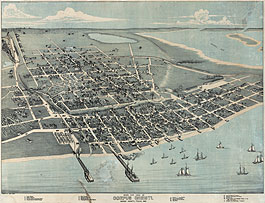
The Battle of Corpus Christi was fought between August 12 and August 18, 1862, during the American Civil War. United States Navy forces blockading Texas fought a small land and sea engagement with Confederate forces in and around Corpus Christi Bay and bombarded Corpus Christi. Union forces defeated Confederate States Navy ships operating in the area but were repulsed when they landed on the coast.
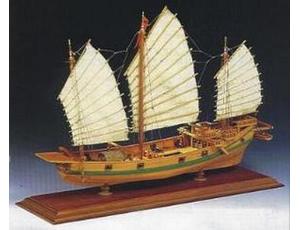
The Battle of Ty-ho Bay was a significant naval engagement in 1855 involving the United Kingdom and United States against Chinese pirates. The action off Tai O, Hong Kong was to rescue captured merchant vessels, held by a fleet of armed war-junks. British and American forces defeated the pirates in one of the last major battles between Chinese pirate fleets and western navies. It was also one of the first joint operations undertaken by British and American forces.

The Battle of Antón Lizardo was a naval engagement of the Mexican civil war between liberals and conservative governments, the Reform War. It took place off the Gulf Coast town of Antón Lizardo, Mexico in 1860. A Mexican Navy officer, Rear Admiral Tomás M. Marín, mutinied and escaped to Havana, Cuba. There he formed a squadron of armed vessels to attack merchant ships and blockade Veracruz. The liberal Mexican Government of Benito Juárez declared Tomás Marín a pirate and permitted foreign navies to attack his ships. Juárez's government was supported by the United States and its navy already had several vessels patrolling in the Gulf of Mexico.
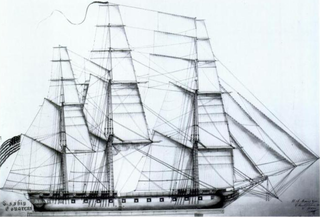
The West Indies Squadron, or the West Indies Station, was a United States Navy squadron that operated in the West Indies in the early nineteenth century. It was formed due to the need to suppress piracy in the Caribbean Sea, the Antilles and the Gulf of Mexico region of the Atlantic Ocean. This unit later engaged in the Second Seminole War until being combined with the Home Squadron in 1842. From 1822 to 1826 the squadron was based out of Saint Thomas Island until the Pensacola Naval Yard was constructed.
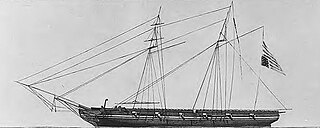
The West Indies Anti-Piracy Operations refer to the United States Navy presence in the Antilles, and surrounding waters, which fought against pirates. Between 1814 and 1825, the American West Indies Squadron constantly pursued pirates on sea and land, primarily around Cuba and Puerto Rico.After the capture of Roberto Cofresi in 1825, acts of piracy became rare, and the operation was considered a success, although limited occurrences went on until slightly after the start of the 20th century.

The Great Lakes Patrol was carried out by American naval forces, beginning in 1844, mainly to suppress criminal activity and to protect the maritime border with Canada. A small force of United States Navy, Coast Guard, and Revenue Service ships served in the Great Lakes throughout these operations. Through the decades, they were involved in several incidents with pirates and rebels.

The Capture of Mazatlán was a Mexican victory during the Maximilian Affair. Mazatlán was a key port of the Pacific trade routes yielding between $4 and $5 million a year.

The Battle of San Pedro was fought between the French and Mexican imperial forces and the Mexican Republicans during the Second French intervention in Mexico on 22 December 1864. The liberals achieved a decisive victory over the invading forces and captured the majority of the survivors.

HMS Forward was a British Albacore-class wooden screw gunboat launched in 1855 and sold in 1869. After her sale, Mexican pirates captured her, and boats from the United States Navy sloop-of-war USS Mohican destroyed her in the Battle of Boca Teacapan in 1870.
